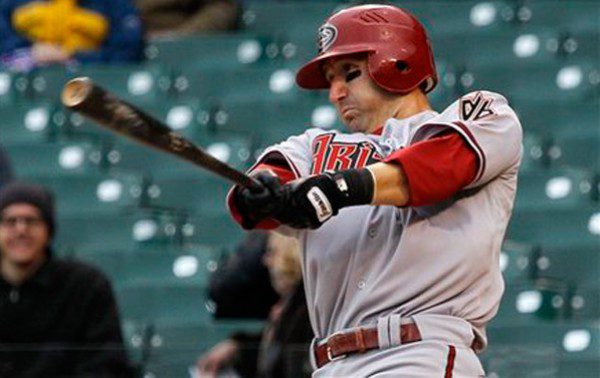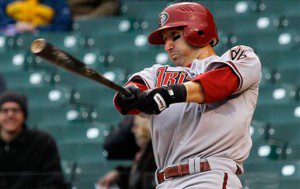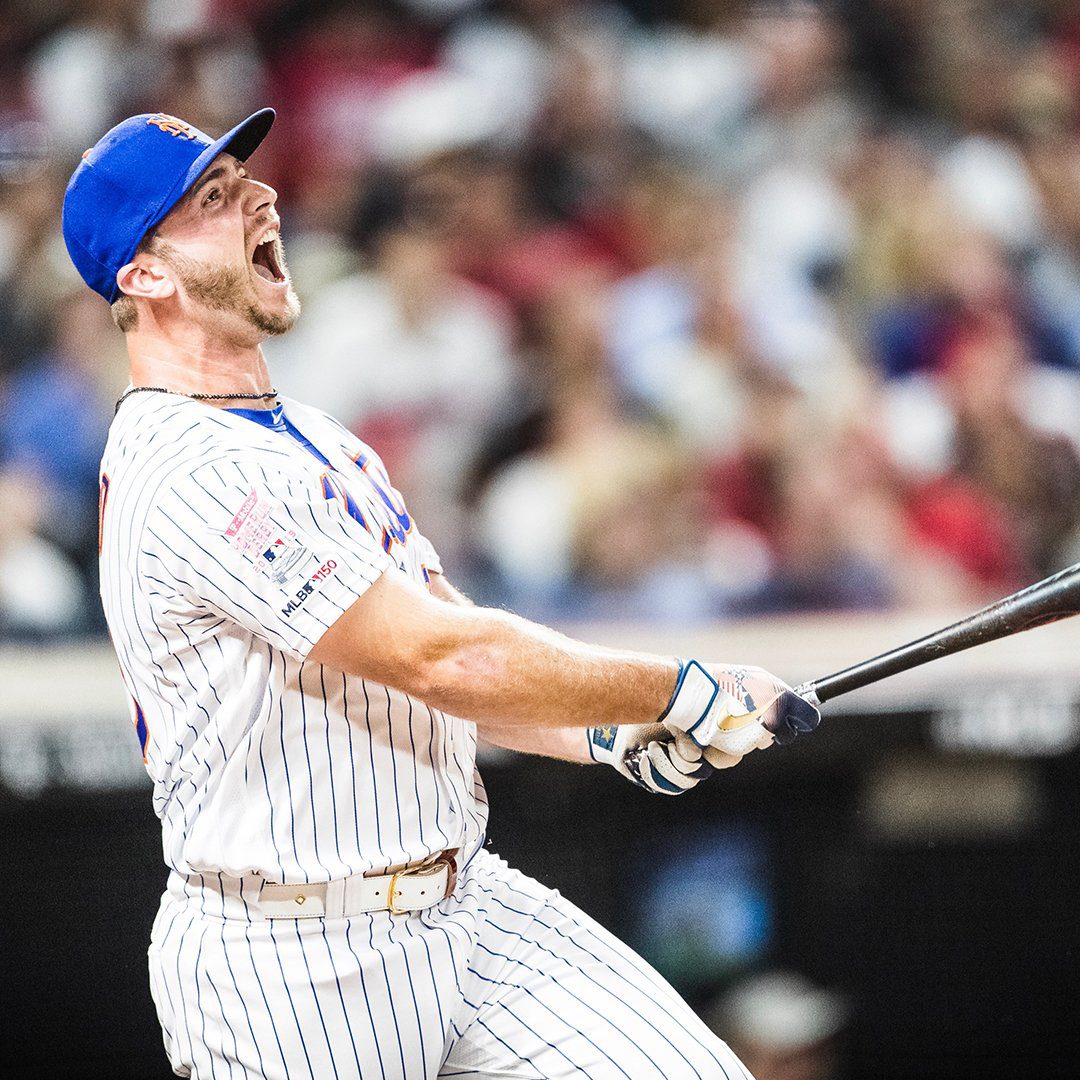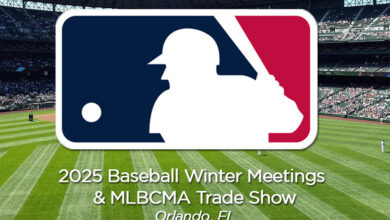

Earlier in the week, we took a look at the American League hot and cold starts to see if there’s anything worth taking advantage of, or if we’re just dealing with small sample sizes. Today, we’re doing the same with the National League. Like before, I’m assuming a standard 5×5 rotisserie league. If you have a different league or any questions there, leave a comment, and I’ll be happy to talk about your format.
Willie Bloomquist: I think Bloomquist is the classic “start super fast, then fade” guy, but he actually has some value in that he can get 20 steals. But, that said, he’s going to be a utility guy once Stephen Drew comes back, and he’s not sustaining a .359 BABIP. If you really, really need speed, pick him up now, but don’t expect his numbers to keep up all season. He’s going to lose some at-bats, and, in fantasy, that’s half the battle. Sell, sell, sell.
Logan Morrison: The only time Morrison’s hit 20 home runs was in single-A ball in 2007, so the idea of him going for 25 and 85 RBIs this year might be a bit far-fetched. But, if he can hit 17-18 home runs, drive in 75, score 80, and not kill you on batting average, doesn’t that sound like someone who can do some good on your roster? Or, at the least, more good than complete wastes like Andres Torres (see below), Carlos Gomez, etc. I’d buy him before people recognize just how decent he is.
Angel Sanchez: Sanchez can, I think, be safely grouped in with Asdrubal Cabrera in the surprising full category of “Undrafted Shortstops Tearing Up the First Two Weeks of 2011” or USTUFTW2K11, for short. Unlike Cabrera, who I like quite a bit, Sanchez’ early numbers are a lot of smoke and mirrors. Because shortstop is so typically a shallow position, owners are often willing to jump on a hot start. Consider this, though: Sanchez has never hit more than six home runs, driven in more than 60, or stolen more than eight bases in any of his six seasons between the majors and minors. In other words, even if his average stays high, he’s essentially Freddy Sanchez in the Astros lineup. No thanks.
Ian Stewart: There are bad starts, slumps, and train wrecks, than there’s Stewart’s 2011 start. An .059 batting average with no runs, no extra base hits, and a strikeout rate of 52.9 percent. Yes, it’s eight games, so sample size is a concern. However, the Rockies are also paying Ty Wigginton $5 million dollars. Now, his numbers really aren’t that much better, and the two are platooning at the moment. That gives Stewart some time to turn around, but his lofty numbers of 2009 (25 HRs, 70 RBIs) seem like a bit of a stretch at the moment. If you have a free roster spot and a lot of patience, go for it, but don’t give up anything for him.
Andres Torres: Torres was drafted entirely off his 2010 season, where he got 16 homers, 63 RBIs, and 26 steals (and 6 WAR, which placed him in elite company, like Carlos Gonzalez/Miguel Cabrera territory). I mean, I definitely drafted him based off those numbers. It looks like, though, we all could have done a bit more research. Torres’ breakout season came at the age of 31, after a half-decade in the minors. Never in any of his minor league years did he hit 16 home runs, although the steals were generally there. Add that to the lineup around him (mediocre), the ballpark he plays half his games in (spacious), and his skills (which history says are declining), and everything was clearly set up for a big-time regression. Again, it’s only been a few games, but if you can trick another owner into thinking this is just a slump and not a big-time sign of a poor season ahead, sell him.
Chris Narveson: I will freely admit that, while I’d heard of Narveson before two weeks ago, I’d never really thought about him. A 13-inning scoreless streak has brought him to the forefront of a lot of fantasy owners. While he obviously won’t finish the year with a 0.00 ERA, the rest of his numbers might be close to sustainable. Even if we use his 2010 numbers as a baseline (7.35 K/9, 1.38 WHIP, 4.99), that’s at least serviceable. Is there every chance he flames out and returns to those numbers, a la Joe Saunders with the Angels a few years back? Absolutely, but buy low and sell high, if at all possible.
Jose Contreras: This one seems like a no-brainer, but Contreras is still available in a surprising number of leagues. His strikeouts, WHIP, and ERA are probably not ideal, but as a back-end closer, you could do much, much worse (say hello to Jon Rauch and Kevin Gregg, for example). It’s simple math, really. The Phillies win a lot of games, so Contreras will get a good number of saves, even if Ryan Madson steals a few. Plus, the estimate for Brad Lidge’s return is the All-Star break, if at all. I’m all-in on Contreras.
Kevin Correia: It’s been a bit of a Jekyll and Hyde start for Correia. On Wednesday, he threw five no-hit innings, then gave up four runs in the sixth. Correia is another classic example of not paying attention to early-season stats. His current K/9 is at 3.15, or less than half of his career rate (6.54). Despite that, opponents are hitting only .235 off of him, which has led to his 2.70 ERA. In short, I wouldn’t advise holding onto him. Even if the strikeouts come up to normal, six and a half strikeouts per game aren’t anything special, and when his BABIP rises, so will the ERAs. On top of that, playing for the Pirates means wins are going to be iffy, as well (sorry, Pirates fans. If it makes you feel better, I love Andrew McCutchen with a possibly unhealthy amount of passion).
Madison Bumgarner: First things first, I love Bumgarner for the future. I also am not overly concerned about his poor start. Yet. Bumgarner threw 193.2 innings between triple-A and the majors last year, along with another 20.2 in the postseason, for a grand total of 214.1 innings. His previous high before that was 141.2, in 2008 in single-A ball. Low velocity was a concern for him entering last year, although it corrected itself and seems okay this year. However, a couple bad starts, a huge innings increase last year and velocity issues are all huge red flags. That being said, his high BABIP (.429), and walk rates will even out, which will help his ERA and WHIP. He’s too good to drop at the moment I think, but benching him until he gets things figured out might be your best bet.
Anibal Sanchez: I typically am in two to three fantasy leagues a year, and Sanchez’ name shows up on the waiver wire at least five or six times a year. I looked at his numbers to try to figure out why. And here it is: Fantasy-wise, he’s just nothing special. Decent ERA (under 4.00 the past two years), decent strikeout numbers, decent WHIP, decent wins — he just is. This year will be no different. It’s his sixth year in the majors, and not much is likely to change at this point. If you need a back-end guy, or are into streaming starters, he’s your man. But, don’t be fooled by his long-past no hitter. That’s not who he is as a pitcher.
And that’s where we’ll leave it for today. At 30 teams and 40 men per active roster, that’s 1,200 players to pick, choose and overreact to. We’ll touch on a lot more players as the season wears on, but for now, play it safe, and in the words of Douglas Adams, “Don’t panic!”
Look out for my weekly fantasy chat, here at Through The Fence Baseball, every Friday (starting 4/22) at noon ET. We’ll talk fantasy baseball, baseball proper, pick-ups, drops, trades, anything really. It should be a blast.





